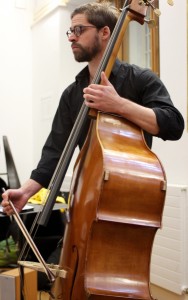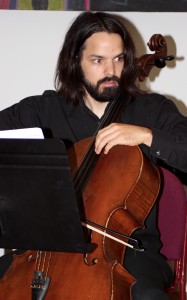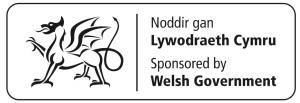CREATIVES
Brenda Oakes, Chair. MA (sculpture), Manchester Metropolitan University. Arts administrator, public art project manager, consultant and researcher
Jane Fox, Artistic director and librettist. MA (sculpture) Royal College of Art, London: BA (sculpture) the Slade School of Fine Art, University College London: BSc Econ (psychology and criminology) University of Wales: Registered nurse, midwife and health visitor/ community practitioner public health: teaching certificate in clinical nursing practice (teaching and assessing)
MRSS (member of the Royal Society of Sculptors) 2007 – 2017; and from 2021
Ashley John Long, Composer, musical director and double bass. Royal Welsh College of Music and Drama, Cardiff
Shelter’s part-graphic score is of a structure that allows for degrees of musical and vocal experimentation and improvisation.
Shelter takes in a diverse range of compositional techniques and musical styles. The work is heavily influenced by the harmonic language of the 16th and 17th centuries and develops and subverts the techniques associated with such styles throughout the work in combination with a much more modern sound world. I have always been interested in how freer areas (both structurally and musically) can exist within a thorough composed structure and to that end, Shelter contains passages where the performers are presented with a scenario in which they must work together using a number of variables to construct a viable musical statement from the information they have been given. Such material coexists with more rigorously structured material to arrive at a work which is informed by the synthesis of these strands of musical thought. – Ashley John Long


TESTIMONIALS
Lara-Clare Bourdeaux vocal performer. Royal Welsh College of Music and Drama
Experimenting with various vocal sounds, textures and timbres was really enjoyable and felt liberating as it involved a feeling of artistic license not often experienced by a classical singer!
Contributing to the part-graphic score in such a personal and individual way was one of the most enjoyable parts of the project- the knowledge that we, the singers and instrumentalists, made Shelter what it was the day of the performance and in fact it will be different every time we perform it in the future. I did not realise the impact that such “individual” interpretations would have on the performance until receiving audience feedback afterwards. For example, one audience member commented on the feeling of a glimmer of hope within Shelter being communicated through Laura’s birdsong- like tweets and vocal noises, which for him suggested the image of a bird outside a window enjoying freedom. These particular vocal sounds were not instructed by the composer per se, however they were part of Laura’s interpretation of the symbols she read in the graphic “mobiles” in the score.
Initially I thought it would be challenging to know how to approach a libretto exploring such sensitive material, however the ingenuity of the score meant that sections of text were presented as if they were fragmented thoughts in a person’s memory. This made them both personal and powerful, as well as disturbing according to audience feedback!
Apart from the initial familiarisation with the score and its new vocal possibilities, the main challenge of the process for me was the final performance of Shelter. This is due to the constant emphasis within my classical training on communication with the audience. It felt alien to me to stand behind a music stand and focus on the score rather than look up and “tell a story” to the audience.
I felt as if I was imprisoned and bound up within the music. I was confined by the constraints of not feeling able to employ my usual channels of communication; facial expression, gesture, body language, acting etc. However as the performance continued, I realised that being vocally liberated compensated for this as I was able to communicate emotion through the voice, resounding with the librettist’s and composer’s original intentions. Furthermore, I began to realise that the interweaving of the libretto with the music was powerful enough to speak for itself, rendering any performer movement or physical expression unnecessary. This was confirmed afterwards by the audience commenting positively on the set up of the performance and suggesting that much movement or characterisation would have distracted from the ensemble of the piece and focussed too much attention unnecessarily on one performer.
It was in the final performance of Shelter that I truly felt its impact and power and the remarkable atmosphere it created amongst the audience.
Laura Curry vocal performer. Royal Welsh College of Music and Drama
I was very happy to be involved with Natasha as the work sounded exciting and poignant and if executed correctly incredibly powerful.
I wasn’t sure what to expect when I received not only the libretto but the extremely complex-looking music in advance. I needn’t have worried however as both Jane and the composer Ashley were incredibly sensitive with the intense material of the piece and were both brilliant to work with being supportive and giving guidance when needed.
One of the things which helped make Shelter a success was the freedom we had to explore the space within the piece and how powerful silence and singular voices could be within the work. The intimate setting of the work, three singers, two musicians made it an all-consuming piece of art for both performers and the audience. Situating the performance in a relatively small space meant that an emotional journey was created and for forty-five minutes all involved were fully immersed in the vivid material of the work.
I would love to be involved in such a work in the future as I think this kind of theatre has an unique power to evoke emotion and impact which is not available in mainstream theatre and will be very popular if marketed correctly.
Jimmy Ottley violoncello. Royal Welsh College of Music and Drama
It was a pleasure to be involved in the process of rehearsing and developing Shelter. The whole team was great to work with and everything ran smoothly with Ashley doing a great job of explaining and rehearsing the score. Everyone rose to the occasion and I think the end result is a powerful and moving piece.
Shelter works on its own with the narrative provided by the singers and visual interest by the performers playing or singing in unusual and sometimes quite physical ways. The hard hitting and emotive content of the libretto is amplified by the score which at times is wild and raucous and at others calm and meditative.
The lack of other elements allows the audience time to think on and react internally to the words.
I really enjoyed working on Shelter and think that performances on these kind of difficult topics are really important. I hope we can bring it to the wider public where I think it will be well received. My thanks to Jane, Ashley and everyone on the team and I hope to be working together again soon!
Asking4It Productions are archived at intervals by The National Library of Wales since 2016.
Copyright Asking4It Productions. All Rights Reserved 2022


![Lottery_landscape_black[1].jpg (1)](http://asking4itproductions.co.uk/wp-content/uploads/2017/05/Lottery_landscape_black1.jpg-1-300x76.jpg)






Leave a Reply